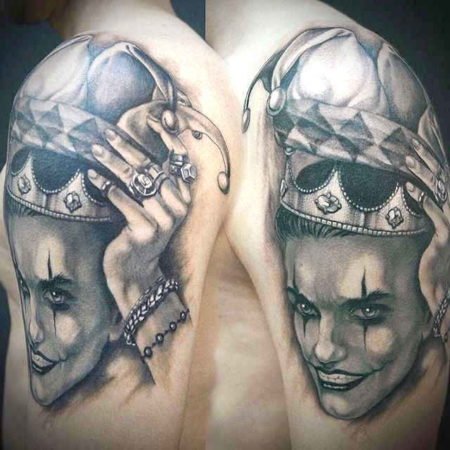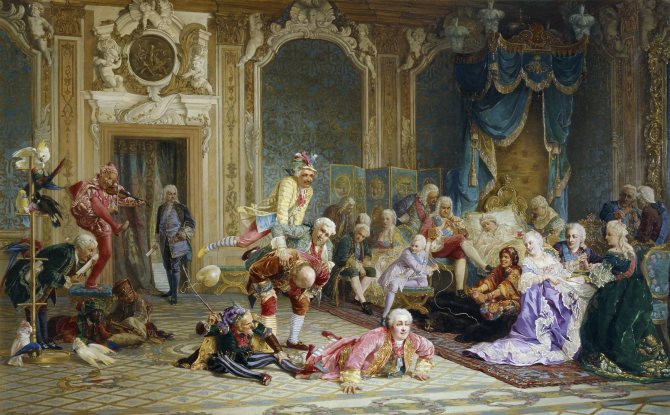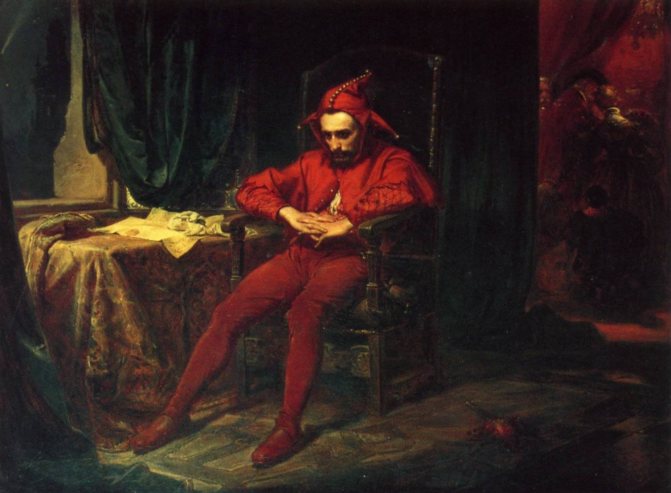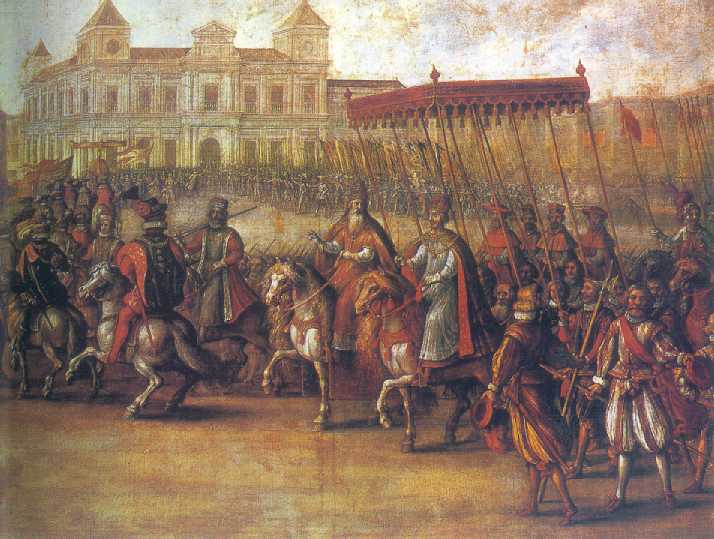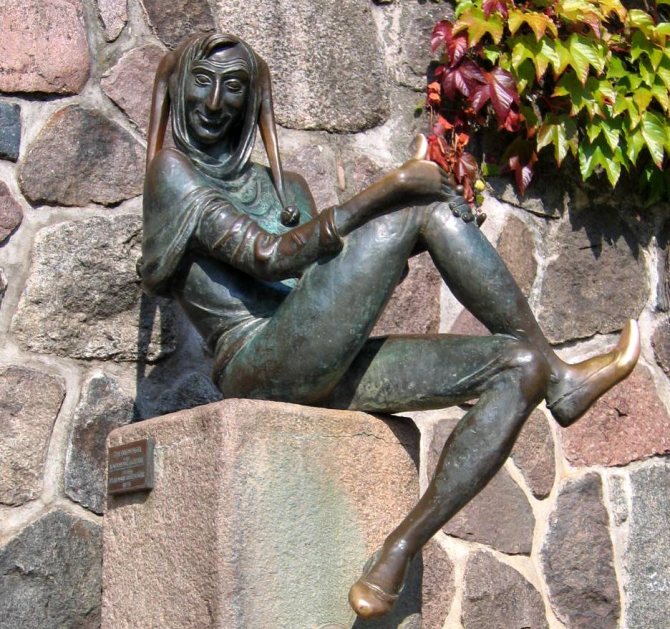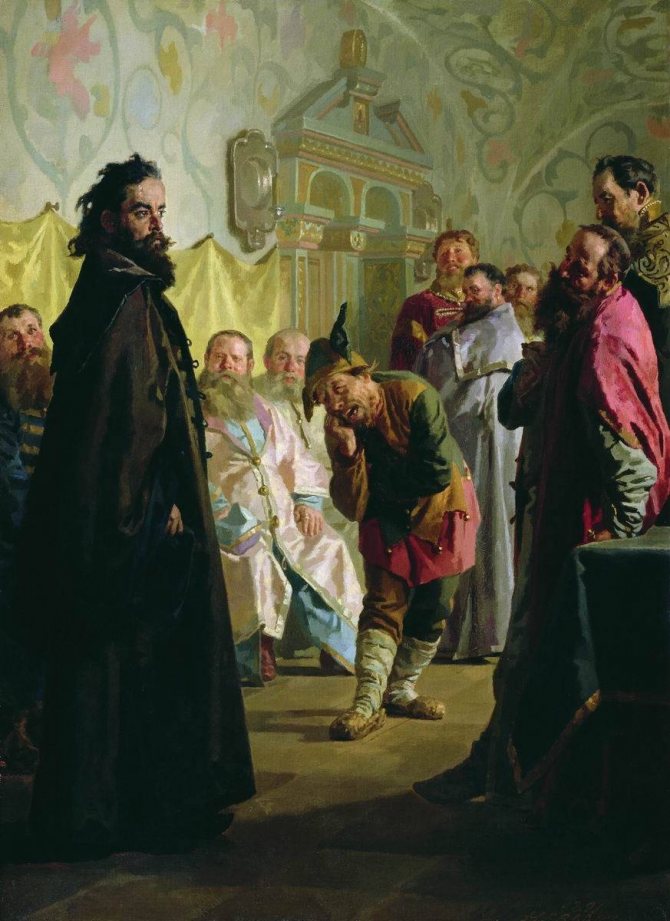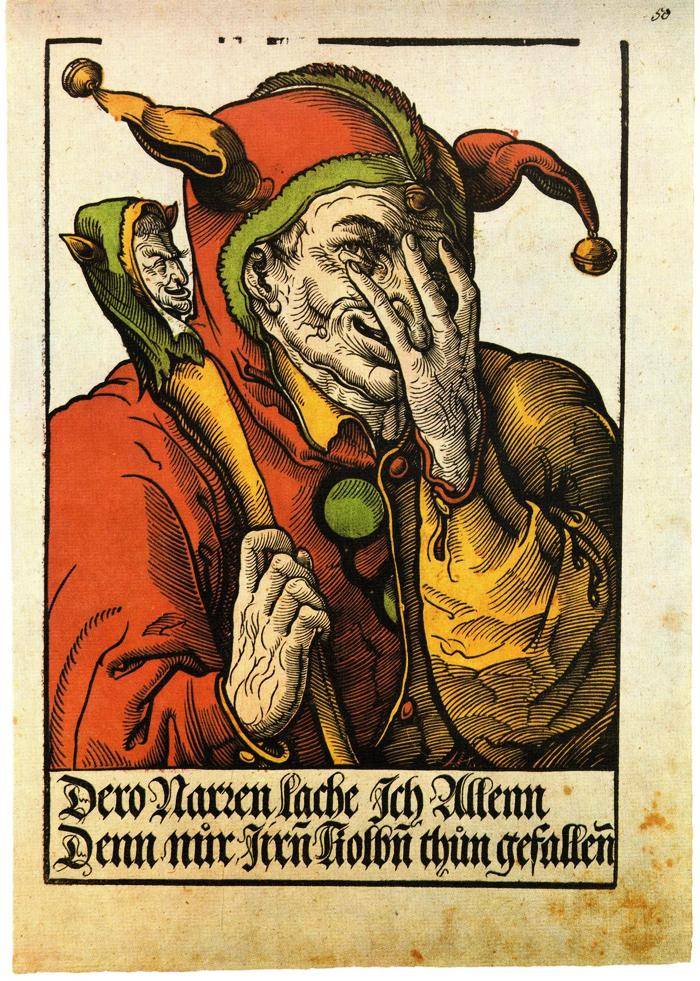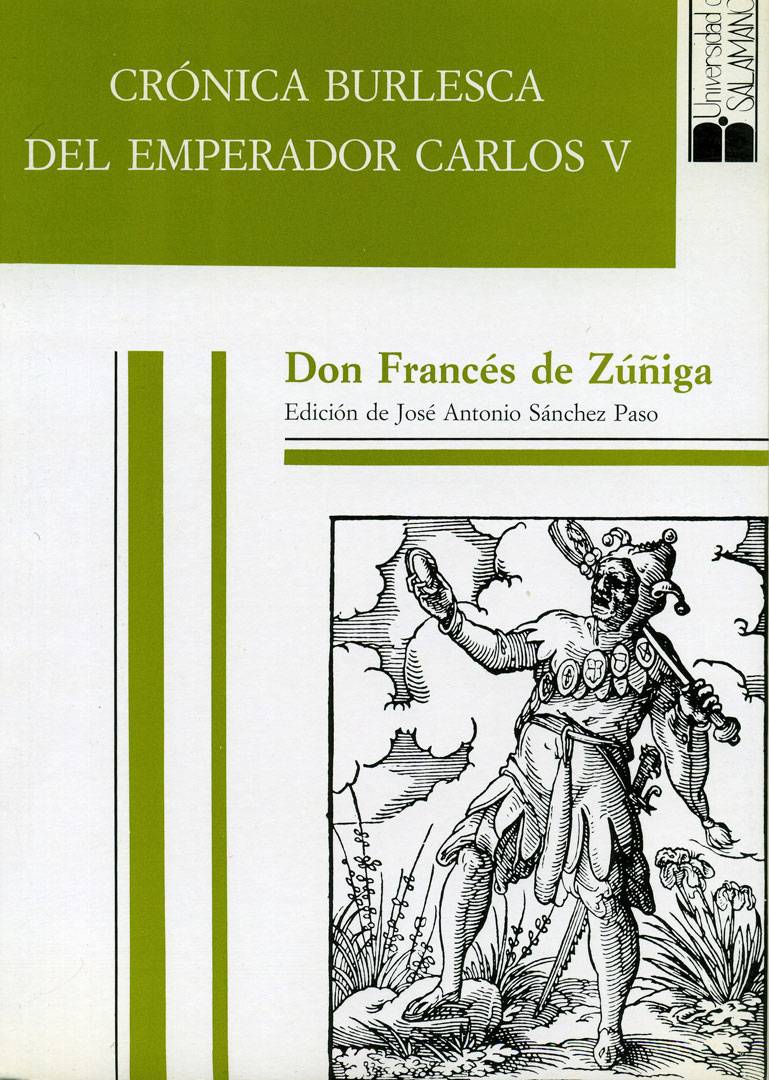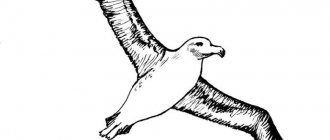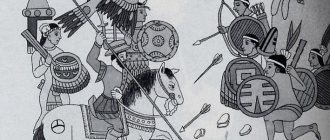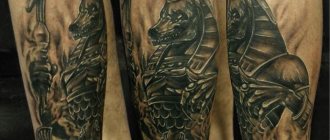The jester or knave is a favorite of tattoo masters. It encrypts an allegorical multifaceted meaning. In addition to the meaning to entertain and sly, the symbol bears the decipherment of a sharp mind and shrewdness. The owner is characterized by a sharp mind and wit, this person is able to expose any lie. Wearers do not tolerate hypocrisy and hackneyed clichés. This tattoo is for real mischievous people who can have a good laugh at the situation.
Jesters in the Middle Ages
In the Middle Ages, the profession of jester originated with the histrionics - free actors who were part of a touring troupe. In different countries they were called differently: jugglers, jesters, shpielmans, jugglers, clowns.
The flowering of the histrionic (acting) arts took place in the 11th-13th centuries, when medieval cities were just beginning to emerge. The jesters at that time were vagants - undereducated seminarians, schoolboys, or demoted priests.
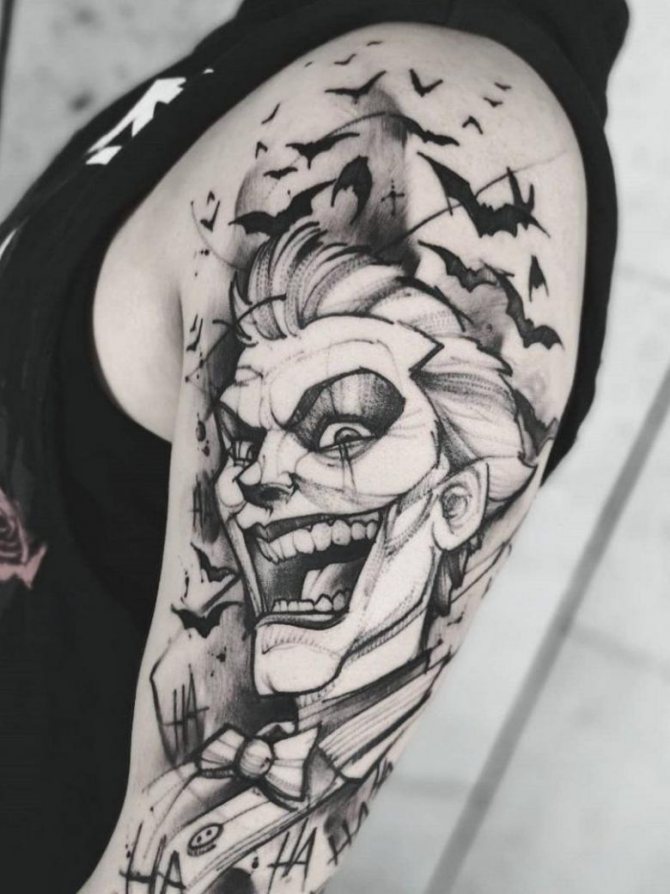
They entertained the people of the city with witty Latin songs that were a parody of church hymns, moments of serious ceremony (initiation as knights, transfer of feoffs).
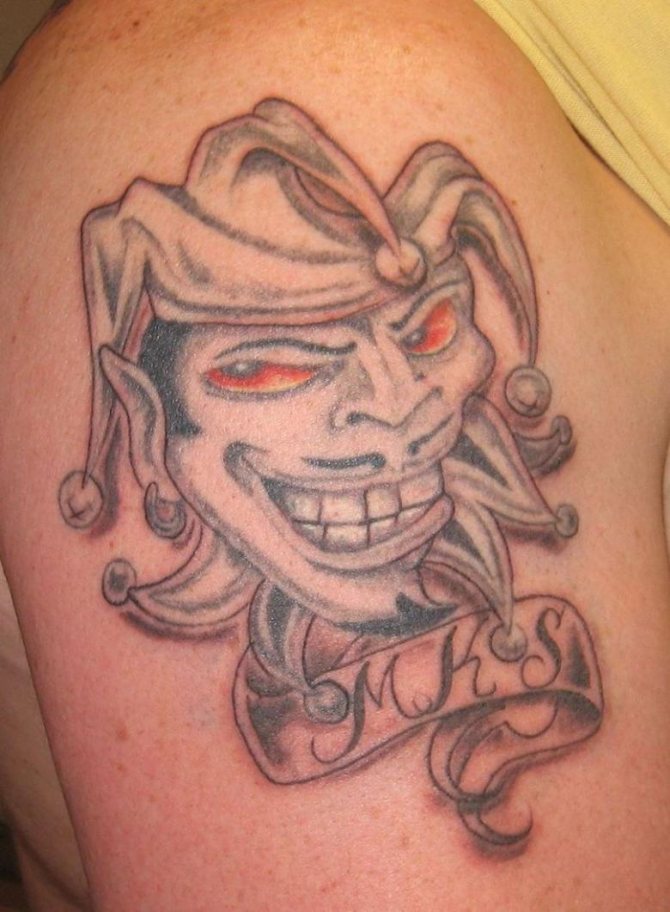

Mocked soldiers marauders, representatives of the church estate, traded indulgences, miserly nobles and merchants.
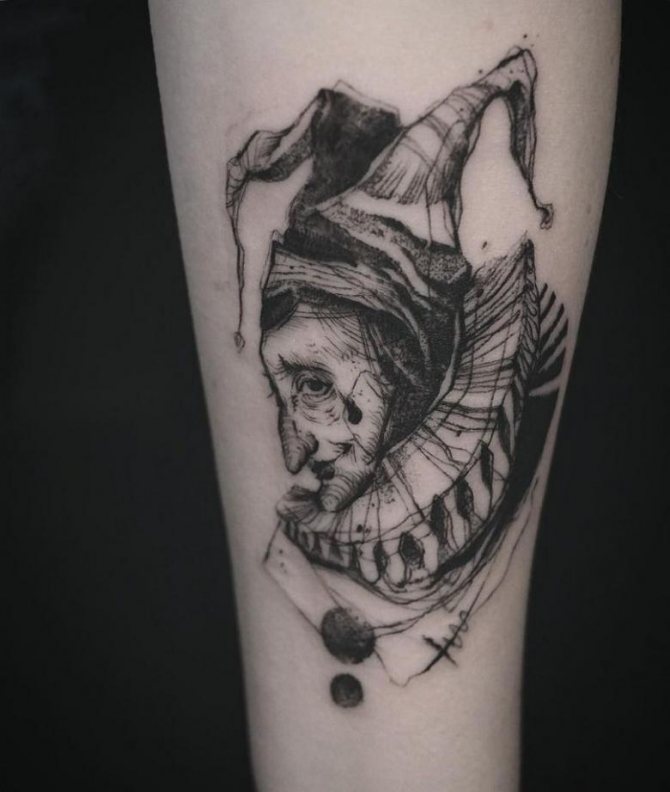

According to records and drawings from the Middle Ages, the jester wore a cap with three bells, symbolizing donkey ears and a tail. In his hands was a staff with a bull's head tied to it, filled with peas.


Medieval jesters were not just entertainers for the public; they could juggle knives and axes and make music. They were mostly sarcastic pamphlets in Latin overlaid with the sound of the lute.
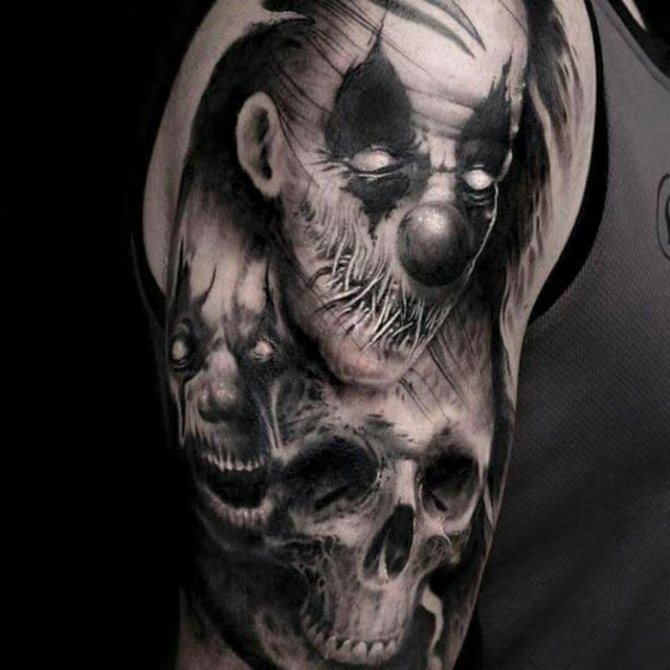

Jesters were allowed much at court. They could mock their masters in front of their guests and not fear punishment. By jesting, he could tell all the vices of his entourage.
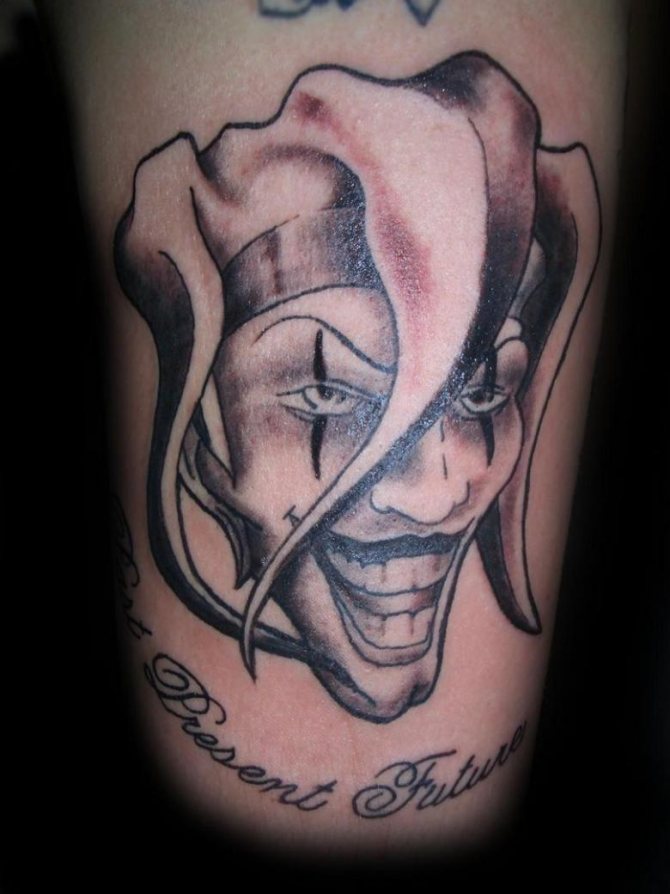

Sometimes jesters were advisers to the king: the royal retinue often underestimated the importance of the jester, and from that they were careless in their words. Therefore, some researchers count the medieval jester as carriers of cultural traditions and secret knowledge.
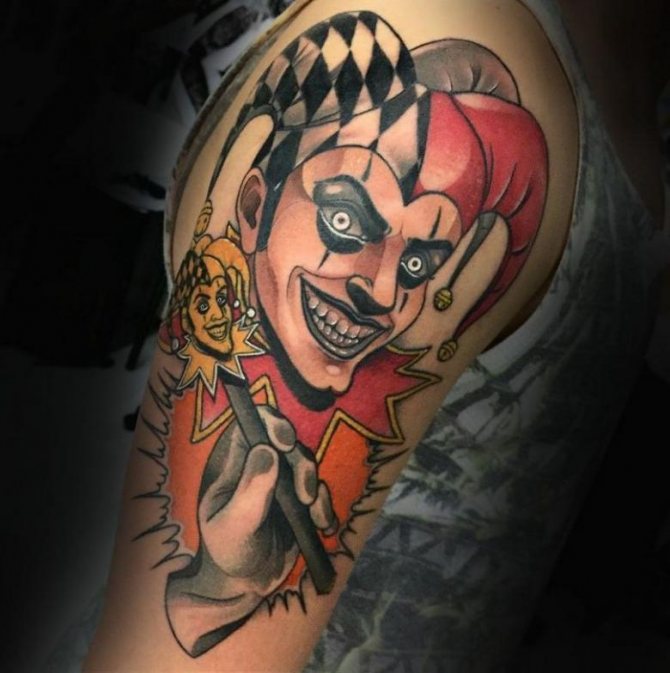

Wit and cleverness or foolishness after all? A little history...
These heirs to tradition have long been the favorites of rulers of all stripes. Their sarcasm, mockery, wit, affectation and fearlessness stunned and attracted. In Russia only jesters were allowed to criticize and ridicule the sovereign and power. They could talk whatever they wanted. If the jester was too stupid and short-sighted and made the tsar angry, he was immediately deprived of his head. That is why only the most shrewd and cunning clowns remained at court. They managed to hide behind a veil of humor a sharp satire on the lives of kings. Often the rulers simply lacked clairvoyance to understand the true background of buffoonery speeches, in fact often, these people close to the government, understand it much more than the rulers themselves. That's why the tattoo with clowns - is, in some ways, a symbol of leadership and primacy. After all, not for nothing, even in the card games Joker has a higher value than the king and queen.
The meaning of the Joker tattoo.
Many people do not realize the multifaceted meaning of the Joker tattoo, so nowadays you can rarely meet a person with this image.
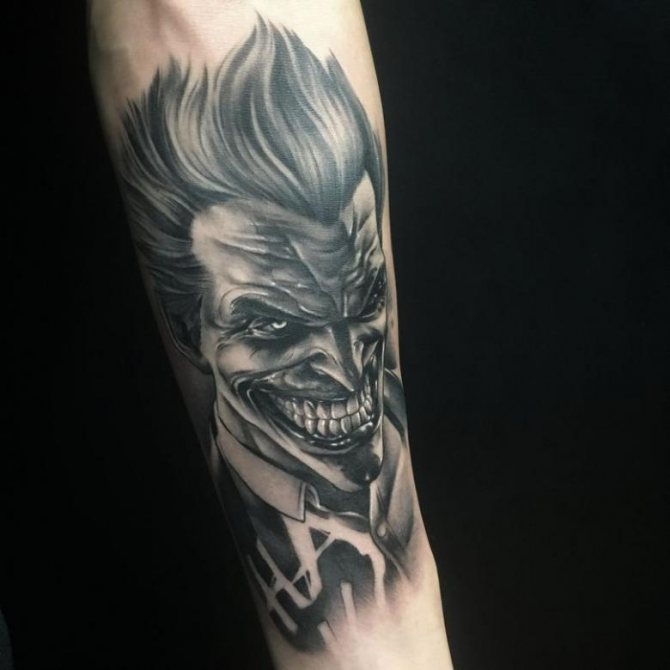

One of the most famous and therefore obvious interpretations of the jester tattoo symbolizes:
- Fun. The jester is never discouraged, always cheerful, optimistic and upbeat. Even if he has tear-shaped makeup on his face, he is still joyful.
- Lighthearted character. A person wearing a jester tattoo may be distinguished by an easy character. This means that he rarely surrenders to despondency over nothing and even in a difficult situation can find a way out.
- Sense of humor. A person tattooed by a jester should definitely have a good sense of humor. He will be able to make anyone laugh.
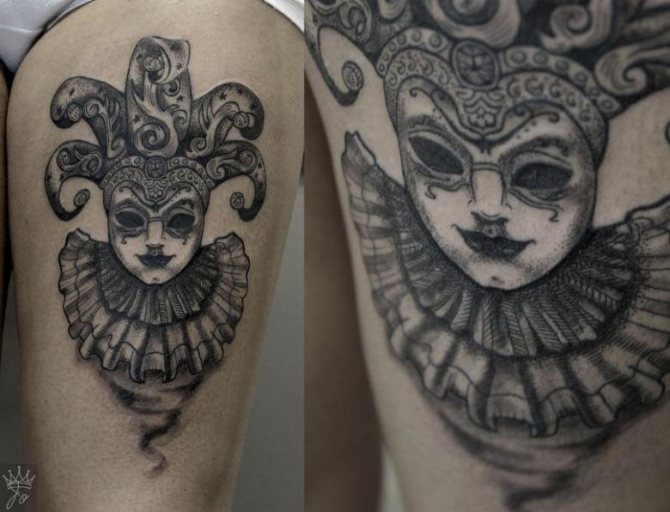

This is a superficial meaning of the tattoo. After all, remembering history, we can say that the jester is a clever, sharp-tongued person who is not afraid to appear funny, funny. He has sacred knowledge and worldly wisdom.
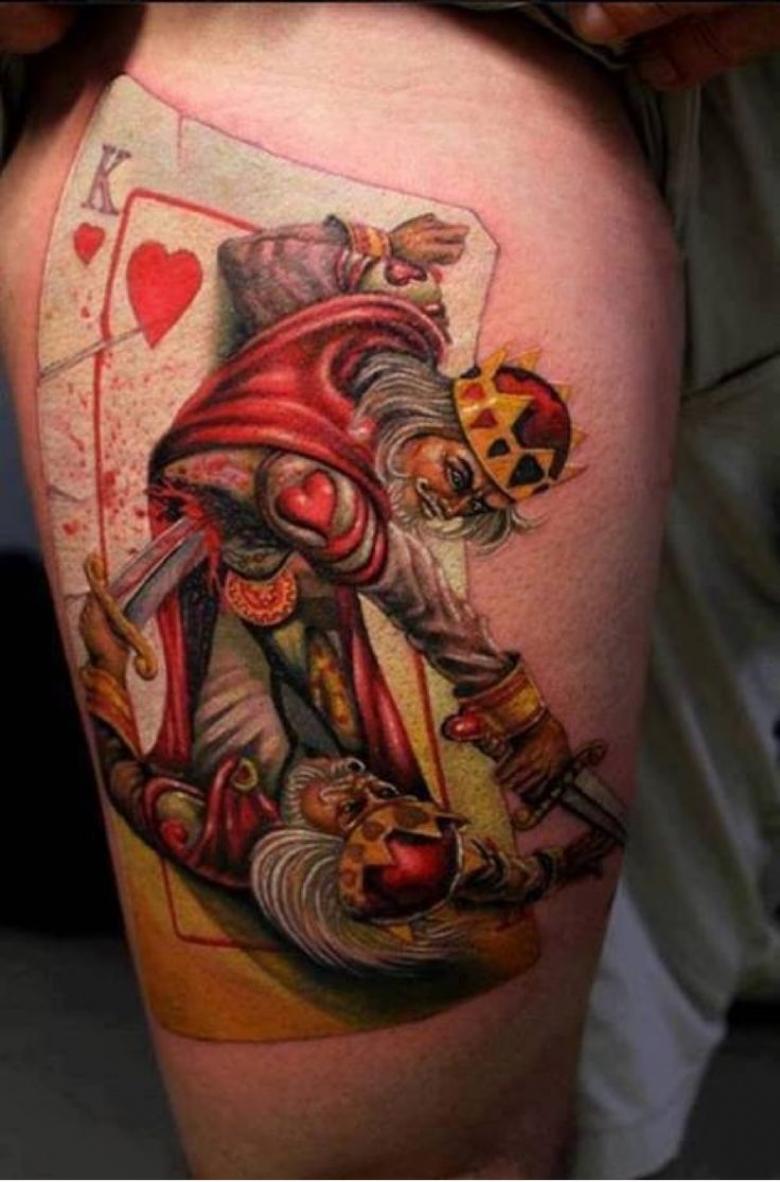

Also, a jester tattoo can mean, in a way, hypocrisy. Showing himself as a joyful and simple man, a jester can be a dark horse, which has its own personal motives and rigorous principles.
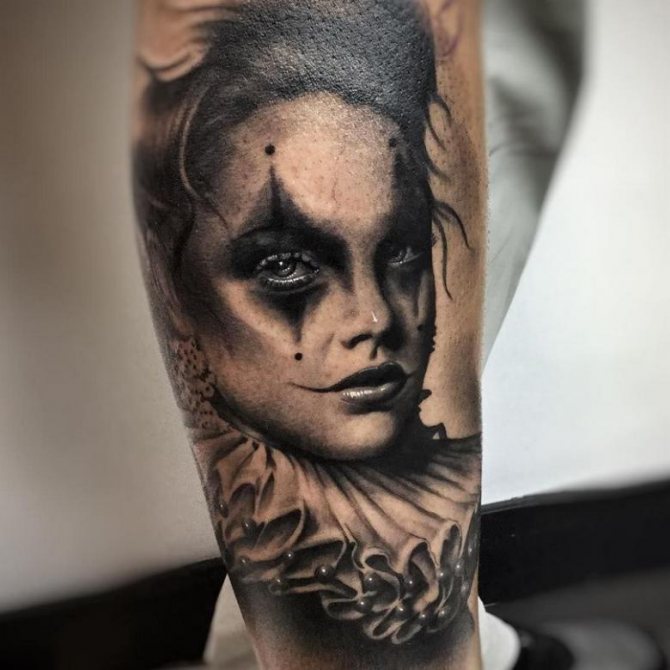

Roughly the same is symbolized by a jester tattoo with a sad mask in his hand or sad makeup. Behind a mask or makeup may hide modesty, insecurity, and secrecy.
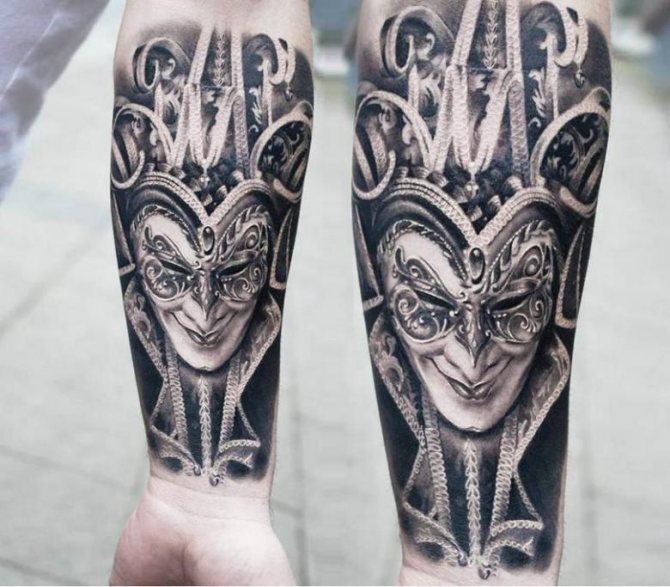

But such a person is not devoid of cunning and intelligence. Some may believe that a person tattooed evil jester is capable of aggression and deception - he is not worth anything to wrap his neighbor around his finger.


Chico
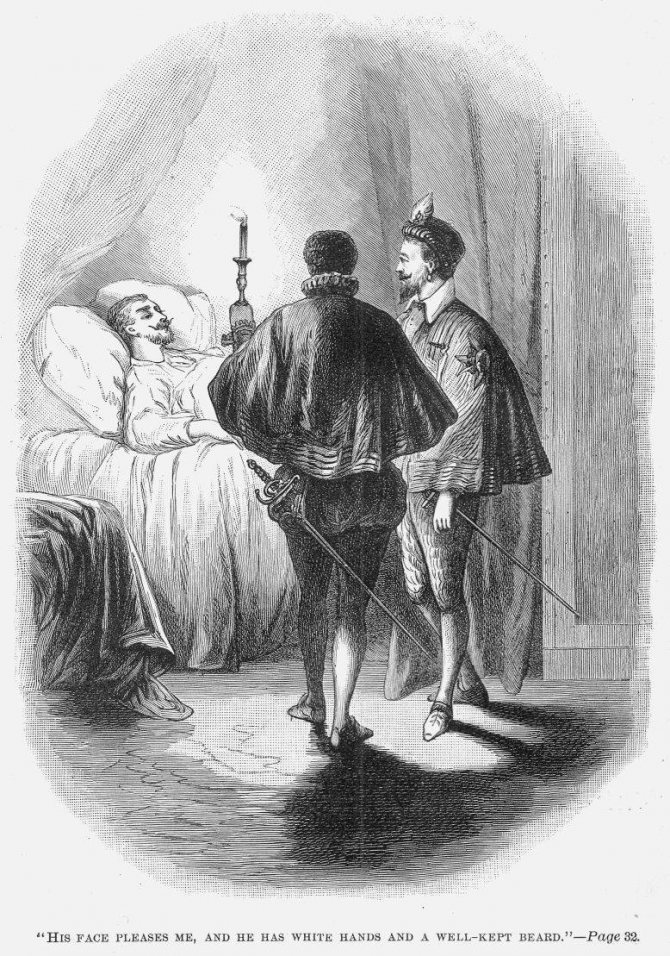

The real name of the most famous jester is Jean-Antoine d'Anglere. His fate is both a confirmation and a counterbalance to the famous saying "from dirt to riches. Jean-Antoine - born Gascon - at first, like D'Artagnan, linked his life and career with the army. A lot of fighting, held significant positions under two kings - Francis II and Charles IХ. However, in the end he was demoted (or promoted?) to a buffoon - and in this role lasted at the court of two more rulers, Henry III and Henry IV.
In fact, the "fragment of a tooth" (which is how "Chico's" nickname is translated) never really played the role of a classic Shakespearean buffoon. He was entrusted with the most valuable information and messages - the kind that cannot be kept on paper. At one time he was head of the guards of the castle of Loche. With great zeal, Chico fought against the Huguenots - and may even have been involved in the murder of one of their leaders, François de La Rochefoucauld. And in 1584 the jester was granted an aristocratic title.
The famous jester was killed at the siege of Rouen by Count Henri de Chaligny, whom Chico did not take away his sword. On learning who had captured him, the Count inflicted a mortal wound on Chico.
Technically, Chico had made a career drop - from a military man to a buffoon, but in fact he possessed uncommon weight in the state. He even signed his name as "Superintendent of His Majesty's Bouffonerie." In 1592 Pierre de l'Étoile wrote of Chico: "The King loved this man, with all his follies, and found nothing wrong in his words; that is why he got away with all his quirks.


Chico played by Alexei Gorbunov in the Russian series "The Countess de Monsoreau".
Moreover, the jester was both a healer and an advisor to the sovereign. No matter what they say, the life of kings and padishahs is not honey, and sometimes the nerves give way, sometimes you mess up in the heat of the moment, and go back on the spot, you can not, otherwise lower yourself in the eyes of those around you. The appropriate joke more than once allowed the rulers to change the decision without losing face.
At times the jester suffered instead of the master: he covered his body and offered to swap outfits with the "kumank" before the fight. Perhaps most tragic is the story of Shen Jiangao, who was a jester under Emperor Le-tsu, who ruled from 961 to 976. At some point, Minister Zhou Ben began to wield too much power in the country. Then the emperor decided to get rid of him and gave him a bowl of poisoned wine at a feast. Zhou Beng, suspecting treachery, took the emperor's bowl from the table, poured his wine into it and fell to his knees, holding out both bowls in front of him. The minister said that if he did not drink with the emperor, there would be no spiritual unity between them, and if so, who guarantees that all the commands of the sovereign will be carried out according to his thoughts?
The emperor was confused and darkened his face. The courtiers were silent and looked at each other. And then the jester Shen Jiangao grabbed both bowls, drank and ran out of the hall. The king secretly sent a servant after him with the best antidote, but it was too late - the jester died.
The fate of our familiar Francesz Zúñiga was no better. He was banished twice: his jokes were too cruel. But both times he came back. The third time Sunyiga was banished for good and settled in Behar. As we already know, he was deprived of his life by assassins sent by one of the offended nobles. And in this, Sunyiga was not an exception to the rule, rather the opposite: sooner or later the jesters would be punished.
It is said that when Frances was already dying, his best friend, Perico de Ayala, jester to the Marquis of Villeneuve, came to him.
"Brother Don Frances," he said, "for the sake of our friendship, in which we have always been, I beg you: when you arrive in Heaven, of which I have no doubt, for I know what a virtuous life you have lived, beg the Lord to have mercy on my poor soul!"
Soonyiga looked at him, uttered: "Tie a string on my little finger, lest I forget," and he died.
The image of the jester has long been iconic in legends and tales, he is very popular in historical prose, it is an excellent character role in the film adaptations. Perhaps first and foremost it is the merit of Shakespeare and his colorful characters - it was he who set a certain "buffoonish" standard which, consciously or not, other writers had to reckon with.
Fiction writers were no exception in this sense. It is true that their jesters often appear in a simplified form, not too similar to their real-life prototypes - but readers love them as well.
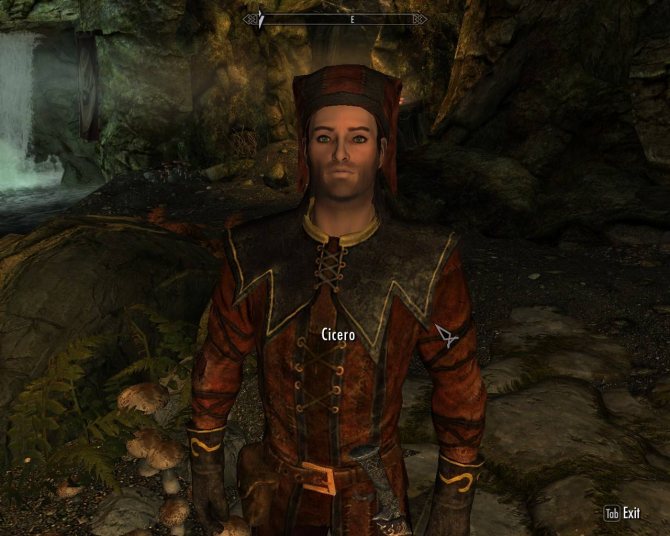

Cicero from Skyrim just pretends to be a fool.
In general, the evolution of the image of a buffoon in fantasy is worthy of a separate conversation. Who was he? Of course, first and foremost comes to mind "classic Shakespearean" - a kind of companion of the protagonist, the reasoner, the wise man-trickster who supports in difficult times and make sure that everything ended well. Such buffoons in fiction are often depicted in one or two colors and released "on stage" sometimes just for a few lines (well, and also to give them a nice death).
Over time, however, other interpretations emerged. In one way or another, they all have to do with the fact that the jester in the social sense is a borderline character, dwelling between the world of customary ties and foundations and the world of utmost chaos. Except that in some cases the jester, bringing chaotic elements into our lives, renews the world order, while in others he destroys it. Accordingly, the roles change: from savior and hero to the embodiment of universal evil.


On why clowns seem scary to people, we told in a separate article


Meta application
The jester tattoo is a full-length tattoo, which is inherently small, telling details. Therefore, the tattoo will look great on the back, chest, shoulder blade. However, the shoulder, forearm, thigh will also do.
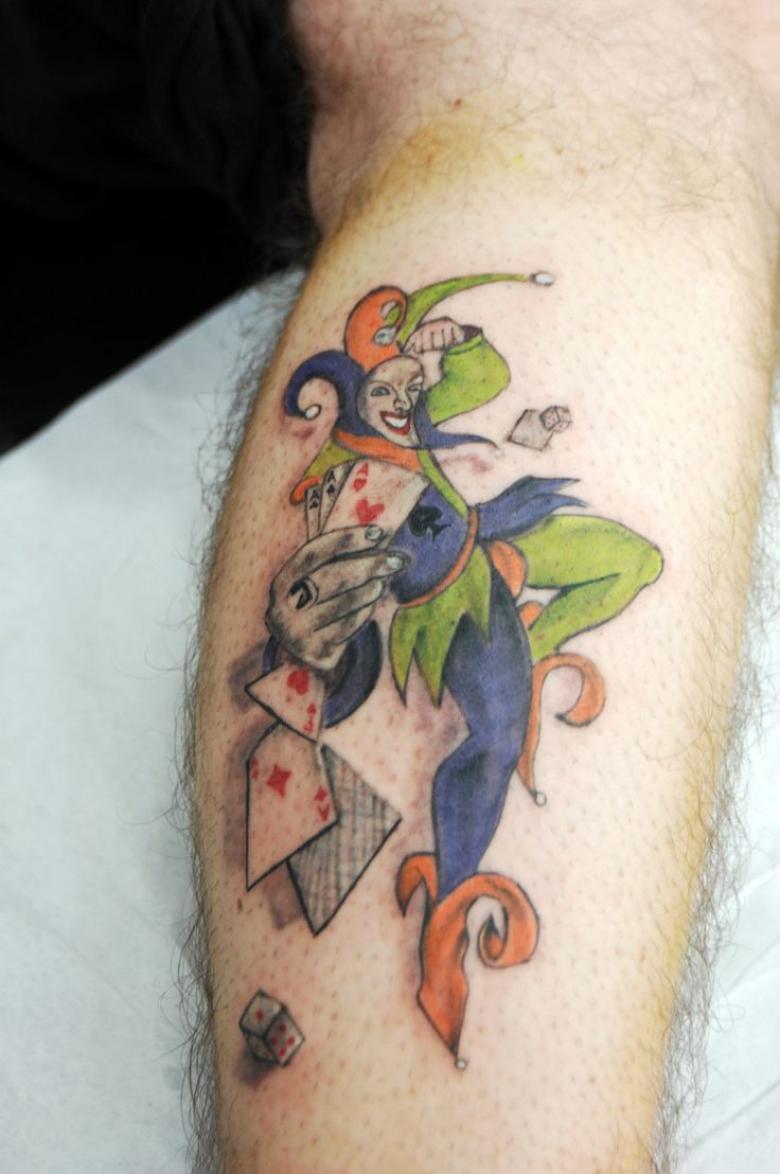

Also, a picture with a jester will help hide scars, marks, striae from prying eyes. It is important to choose an experienced master, who under your desires and aspirations will select the right sketch.
https://youtu.be/qxPyxvfnLDQhttps
://youtu.be/K7U59b-h2xI
Tips for sketches
Tattoo sketches jester refer to a purely individual symbolism. Since the sign is ambiguous, it is worth avoiding copying someone else's work. They can only serve to illustrate a style or composition you like. After choosing a style, pay attention to the details. Aggression will emphasize facial expressions, makeup and death paraphernalia.
Create a more playful and transparent image with a mask and light colors. Black and white works should be done in chicano, graphic, etching and Dotwork styles. Avoid unnecessarily deep dark shades if you don't want to add drama to the drawing.
Recommended reading: Dice playing tattoos

